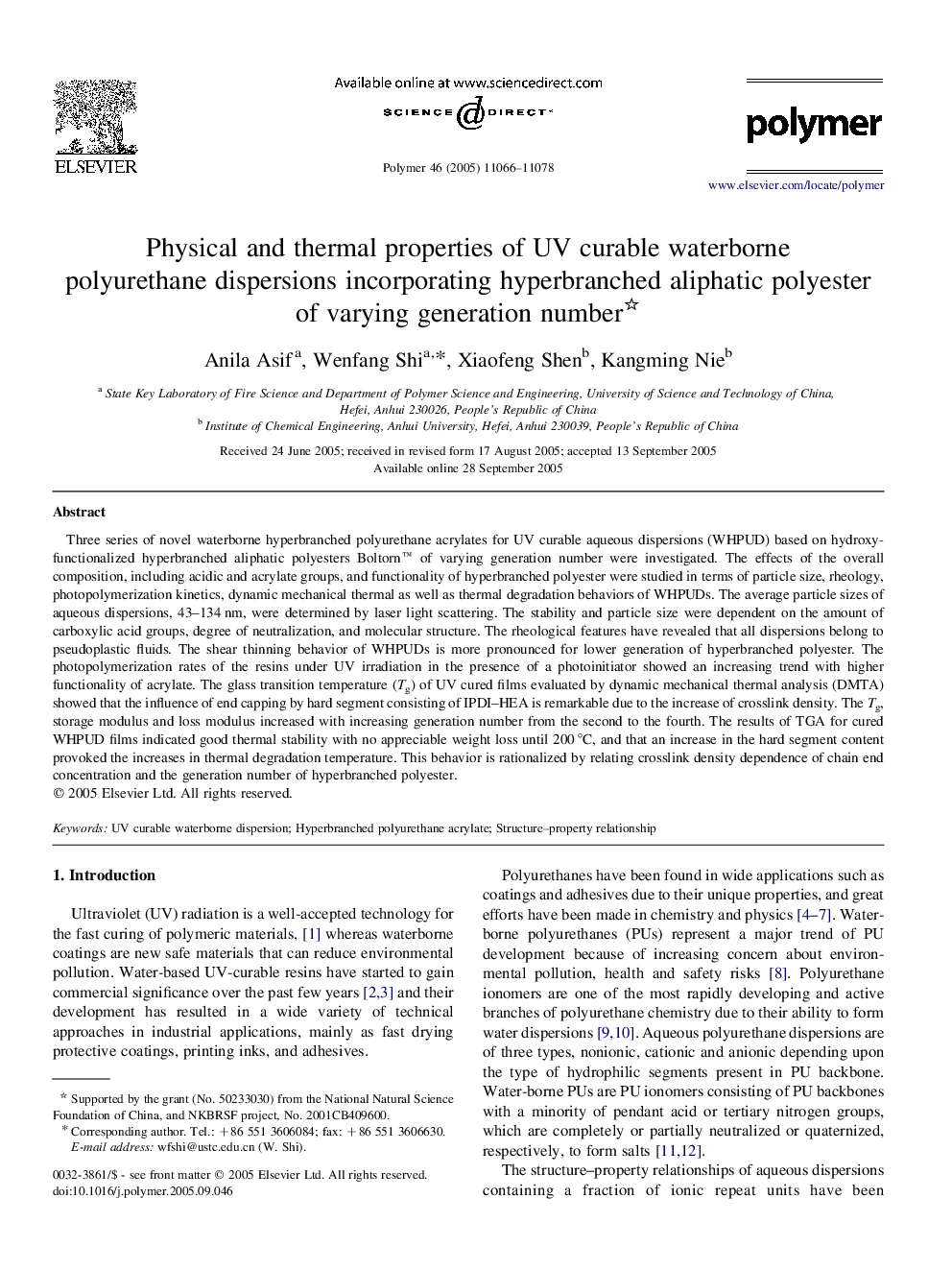| کد مقاله | کد نشریه | سال انتشار | مقاله انگلیسی | نسخه تمام متن |
|---|---|---|---|---|
| 5186880 | 1381115 | 2005 | 13 صفحه PDF | دانلود رایگان |

Three series of novel waterborne hyperbranched polyurethane acrylates for UV curable aqueous dispersions (WHPUD) based on hydroxy-functionalized hyperbranched aliphatic polyesters Boltorn⢠of varying generation number were investigated. The effects of the overall composition, including acidic and acrylate groups, and functionality of hyperbranched polyester were studied in terms of particle size, rheology, photopolymerization kinetics, dynamic mechanical thermal as well as thermal degradation behaviors of WHPUDs. The average particle sizes of aqueous dispersions, 43-134 nm, were determined by laser light scattering. The stability and particle size were dependent on the amount of carboxylic acid groups, degree of neutralization, and molecular structure. The rheological features have revealed that all dispersions belong to pseudoplastic fluids. The shear thinning behavior of WHPUDs is more pronounced for lower generation of hyperbranched polyester. The photopolymerization rates of the resins under UV irradiation in the presence of a photoinitiator showed an increasing trend with higher functionality of acrylate. The glass transition temperature (Tg) of UV cured films evaluated by dynamic mechanical thermal analysis (DMTA) showed that the influence of end capping by hard segment consisting of IPDI-HEA is remarkable due to the increase of crosslink density. The Tg, storage modulus and loss modulus increased with increasing generation number from the second to the fourth. The results of TGA for cured WHPUD films indicated good thermal stability with no appreciable weight loss until 200 °C, and that an increase in the hard segment content provoked the increases in thermal degradation temperature. This behavior is rationalized by relating crosslink density dependence of chain end concentration and the generation number of hyperbranched polyester.
Journal: Polymer - Volume 46, Issue 24, 21 November 2005, Pages 11066-11078